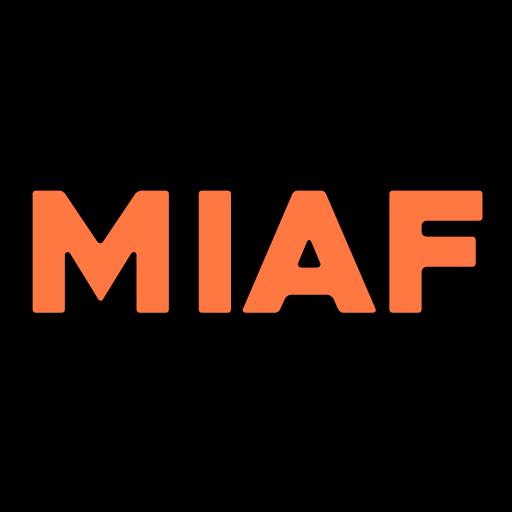
At Hackney Picturehouse book tickets
ONLINE: book tickets or buy a pass
One of the relentlessly tedious parts of this job is dealing with the wobbly certainties exuded by the live-action lot who prattle on and on about their daily existential struggles and the creative hernias they constantly risk in trying to ensure the integrity of ‘story’ in their artform. Not that that doesn’t happen – and often it happens BIG – but, really?? There’s a lot of ways to tell stories. And, in any case, in the overwhelming number of these dissertations the editor never gets a mention, despite having as much (if not more) to do with the structure, lucidity and completeness of the story as the director.
If all of this seems like some shot in an undeclared or imaginary animation vs live-action battle, it’s not. Animation won that skirmish yonks ago – just ask any animator.

The PR battle might be another story though. The imagination is an interesting organ. Unleashed without restraint and fuelled to absorb every single horrible and post-credible idea, it can be a terrible weapon. Charles Manson possessed an especially vivid imagination. Alternatively, doused with ether just as its first flowering is threatening to break through and forced into a cardboard box that gets mislabelled and stored in the attic, it produces a sullen specimen which, if possessed of sufficient energy to gnaw its way out of the nest winds up coming up with something akin to the Daily Mail. This precarious pendulum pivots back and forth on a needle point, with the phrase “you couldn’t make this stuff up” on both sides of the see-saw. On one side, there literally isn’t the creative, intellectual firepower to make ‘this stuff up’. They literally can’t imagine it. Ever wonder what that view looks like?

On the other side, “you couldn’t make this stuff up” speaks not to a deficit of imagination but a cascading abundance of the stuff. Same words, different universe. They say English is a tricky language to learn.
The point, here, is that a decent imagination is a bit like a decent wine cellar – you probably shouldn’t use it all at once but having it laying around to pull out for best effect on the right occasion is a better lifestyle option than stumbling down to the cornershop on a whim, throwing down a fistful of coins and buying the second cheapest bottle of red wine on offer. This tug-of-awareness, believe it or not, is just as relevant within the world of documentary filmmaking, live-action or otherwise…. we’ll get to the otherwises in a bit.
Only webcams are truly documentary – and even then, actually, somebody has often made very conscious decisions about where to put them and what should (and should not) appear in the frame. Every documentary, even the really great ones, are a curation of ideas and agendas, often taking extra time to lay a trail of breadcrumbs towards the Exit door AKA “conclusion”. Nothing wrong with that. Who wants to sit and watch a whole hour of footage from a static camera pointed at the midday hibernating tedium of the African savannah? Down south the ice IS melting but you could sit and watch a six-hour video of it and, in truth, it wouldn’t really melt that much during that time. A bit of the ol’ time lapse action spices up that slow walk to extinction.

In every documentary you watch, somebody somewhere is manipulating not so much the action but the trajectory of the arc that action describes. That makes it neither ‘false’ nor propaganda. False usually gets called out one way or another. And the buffer zone between ‘true’ (enough) and propaganda is actually pretty broad. It’s certainly broad enough for most people to readily identify which side of the no-man’s land the ship has landed in – although the specific pencil-line boundary that meanders unevenly through that documentarian DMZ is thin, ever-shifting and contested in real time.
So with all of that in mind, why does the mere suggestion of animation being used in documentary cause so many conniptions and risk multiple cases of the vapours?
This year’s ‘Animated Documentaries’ programme stands as one of the most diverse we have presented in quite some time. Techniques span a panoply of the animators playbook. But above and beyond the techniques on offer, the subject matter speaks to the near-infinite spectrum of what attracts animated documentarians. Sometimes there just isn’t a better (or ANY other) way to tell the ‘story’.
Exhibit A (and the opening film) is Save Ralph by Spencer Susser. Nothing in this film is real in the real sense and yet it is about as documentary as a documentary can get. How else other than with animation could this case be made in this simple yet devastatingly powerful way?
Exactly the same thing can be said for The Train Driver by Zuniel Kim and Christian Wittmoser. So much of the power of the story is in its obviousness. It is something we never think about because who wants to think about it, let alone talk about it – and we would never dream to ask if we were ever presented with the opportunity to do so. And yet, there must be details, tiny little details that linger like the back teeth in a shark’s mouth. Nobody wants to put their arm into that. If talking about it is out and writing about it would never get past an editor then a live action version would have to be so horrible it would be alienating or so trimmed back it would risk skirting with banality. Using animation is the ‘get-outa-jail-card’ here.
In a similar way, animation is the perfect medium to super-charge the depth and weight of the most intrinsically personal elements of a documentary story. There are a variety of reasons filmmakers will elect to do this. In some cases it provides a kind of protective blanket across something that would be painful to discuss. In others, it allows the filmmaker to pour in a level of intensity or sheer honesty that an audience might turn away from if it were presented in live-action. Or the animation can be used to visualise something that words or ‘real’ actions could never get across.
All Those Sensations In My Belly by Croatian Marko Djeska is a brilliantly executed example of the latter. Coming out as trans and recalling a series of experiences bending moments of fear, loss and confusion that were part and parcel of that during the already tumultuous years of youth and the harsh environment of school is a story that has many chapters. Much of what happened can be documented (and is in this film) but it is the animation that really brings home the otherwise invisible emotionality of it all with a kind of precision that words never could.
Likewise, In The Shadow Of The Pines by Anne Koizumi uses a deceptively simple style of technique to delve in behind the narration of the soundtrack and the raw visual data of the world she depicts. It is a story with a lot of moving parts and a variety of emotions that bounce off various surfaces as it unpacks a gradually maturing viewpoint of a young girl’s reactions to the life and temperament of her immigrant father. Her perception of his ‘lowly’ status and her wishes for a father that was almost anything other than the one she had are the stepping-off point for a film that has an almost memoirist lens across it. That lens, though, is multifaceted and it’s the animation that gives the film its additional kaleidoscopic feel.
In other cases, the camera just couldn’t be there so animation is not just a perfect way, not just a great way, but the only way to really tell the story without resorting to cheap actors dressed in funny clothes with a celebratory voice over.
The Chimney Swift by Frederic Schuld takes us back to a time we have thankfully long left behind but brings us a surprisingly personal set of insights into a story we thought we knew but had never really thought about in any detail whatsoever.
Osbert Parker uses a highly imaginative cluster of ingeniously deployed visual symbols to depict a 400-plus year record of emigration in Timeline. It might end in the current day and remind us that humans have been moving forever but the way Parker has marshalled this moving imagery makes us think about all the complex forces that have driven that. In short, he uses animation to create and join dots in ways no other storytelling technique could hope to achieve. There is, one suspects, also something about the highly visual nature of this sort of storytelling that helps us retain if not the entirety of the message then at least some sinews of its effect.
It is also odds on that there weren’t many cameras on board Charles Darwin’s ship ‘The Beagle’ in 1833 when he came face-to-face with three indigenous people who had been kidnapped from Tierra del Fuego three years earlier. Their life’s stories, their journeys and their experiences are rich and complex, and span a number of lands, oceans, cultures and timeframes. Animation is the perfect vehicle to piece together this jigsaw of narrative threads. Even better, master animator Georges Schwizgebel took up the challenge in his new film Darwin’s Notebook and brings his gorgeous, ever moving, constantly morphing, mind-bending style to it. It is a sight to behold. It moves so effortlessly through all of these different realities that it resonates as some sort of amorphous cross between ballet and six-layered chess.
We wrap up the programme with Only A Child by Simone Giampaolo. Sometimes pushing the animation button just pumps up the volume and pushes the impact envelope. When form meets tone meets style meets message, the whole comes away as being far far more than the sum of the parts. And so it is with Only A Child. The film speaks for itself (literally) and it is THE message of our age, delivered by somebody with the greatest stake in it…. except the message this film stands on was delivered 30 years ago (for those not good with numbers that’s THIRTY years ago). Nobody can say we didn’t know and we weren’t warned.
Malcolm Turner – LIAF Co-Director
















